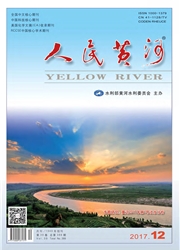

 中文摘要:
中文摘要:
基于黄河上游某工业区居民直接饮用黄河水的健康风险问题,构建人工湿地对黄河饮用水进行处理,研究其对饮水健康风险的降低效果及机理.湿地运行后按月采集黄河水、湿地处理水、湿地基质和湿地植物等样品,测定样品中Cu、Zn、Pb、Cd 4 种重金属的含量,从而对人工湿地对不同人群饮水风险的降低效果进行评价.结果表明:直饮黄河水的健康风险值儿童大于成人;构建的人工湿地能显著降低黄河水中的重金属含量,进而可显著降低成人和儿童引用水的健康风险值;湿地基质的吸附富集和湿地植物的吸收是湿地去除重金属的两条主要途径.
 英文摘要:
英文摘要:
Based on the health risks problems of local residents directly drinking the Yellow River water in an industrial zone in the Upper Yellow River, this research used constructed wetland to treat the polluted Yellow River drinking water. Aiming to study the reducing effect of constructed wetland on the human health risk, this study chose the samples including Yellow River water, wetland treated water, wetland sediment and plant. Total concentrations of four HMs including Cu, Zn, Pb and Cd were measured for these samples. The effect of constructed wetland on the drinking water risk to different people was evaluated. The results show that the health risk value of drinking water of the Yellow River of Children is greater than that of adults;constructed wetland significantly reduces the heavy metal content in the Yellow River water, and reduces the health risk value of human and children significantly. The adsorption and enrichment of wetland substrate and the growth and absorption of plant are two main ways to remove heavy metals from the constructed wetland.
 同期刊论文项目
同期刊论文项目
 同项目期刊论文
同项目期刊论文
 期刊信息
期刊信息
